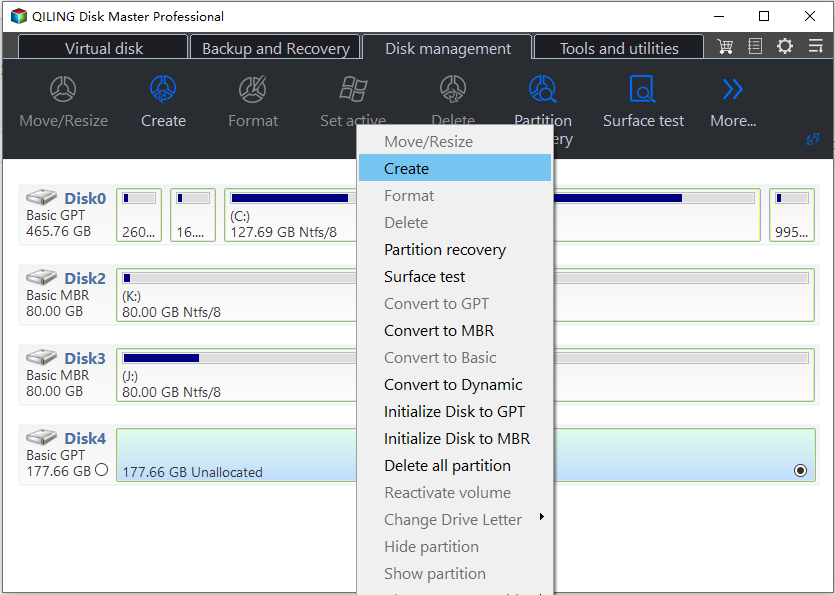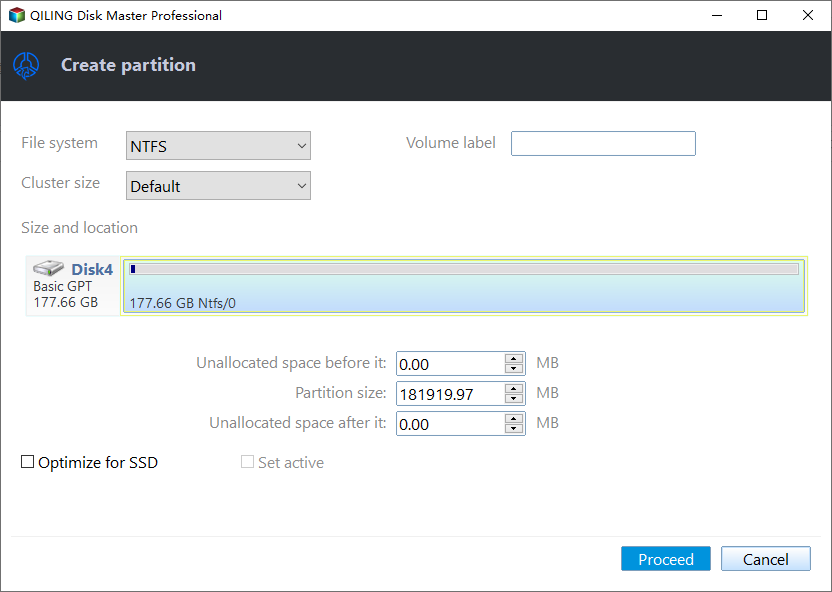Two Ways to Create New Partition on Hard Drive
Why create new partition?
When do you need to partition your hard drive? You may want to do this if you want to create a multi-boot machine with Windows on one hard drive and Linux on the other, for example. Or, you may want to put your operating system and applications on one drive, store your data on another, and put your media on yet a third one.
For example, if you have a 90GB hard drive, you may want to give Windows and your applications a 30GB partition, give your data 10GB, and save 50GB for your media.
Then how to create new partition? This problem stumped many computer green hands. Generally speaking, there are two relatively convenient ways to create new partition.
1. Create new partition through disk management snap-in
Windows has its built-in disk management, which allows some basic management regarding to partitions. To create new partition, right-click "my computer", choose the "manage" option, and access the computer management interface. Choose the "disk management" option on the left side, ensure there is unallocated space in the Disk. Then, it is available to create new partition after right-click and choose the "new partition" option on this disk. (If there is not any unallocated space, try to shrink or extend the drive to make an unallocated space via using free Partition Assistant Standard Edition.)
Finish the operation above, then follow the New Partition Wizard to finish the remaining operations. The New Partition Wizard will ask you to specify the followings:
- The Partition Type: Primary partition, extended partition, or logical partition. Choose one from these three forms.
- Primary partition:A primary partition is a volume you created by using free space on a basic disk.Windows and other operating system can start from a primary partition.
- Extended partition: An extended partition is a portion of a Master Boot Record (MBR), which can contain many logic drives/partitions.
- Logical partition: You can create many logic partitions as you like after you have created an extended partition.
- The Partition Size:The wizard will display the minimum and maximum size for your choice, and you could specify a proper size for new partition.
- The Drive Letter: You may select any unused letter such as F:, G:, H:, but the wizard will offer a defaulted drive letter for new partition. If select the "Do Not Assign a Drive Letter or Drive Path" option, this will let Windows assign a letter later.
- Format Partition: The new partition must be formatted so as to store the files and data. The file system, two types—NTFS, FAT32 (NTFS has better security features, the better recovery capabilities after a major crash, and has file-level compression built in. FAT32 is simple and readable to work on many operating systems. If choose the NTFS, and want to convert NTFS back to FAT32 someday, the operation also can be realized)
Please following the wizard hint, you could create new partition step by step.
2. Create new partition with the free Partition Assistant Standard Edition
Qiling Disk Master Standard Edition is completely free software, aiming at managing disk partitions in an easier and effortless way. Starting with a clean slate, below are the full instructions.
Open Partition Assistant (Freeware), you will see the detailed information of your disk. To create new partition is a piece of cake, if there is unallocated space. Choose the unallocated space and right-click on it, and then choose the "Create Partition" option in the pop-up menu.
Then, the partition assistant will remind you to configure the "partition size", "drive letter" and "file system". You can set as your request. Then click "Prceed" button to take effect the operation.
In short, both ways of creating new partition are not difficult. The difference is: the later method can support to create any FAT32 partition more than 2TB in size, but the former one supports up to 32GB only. Besides, Partition Assistant has more features to manage disk partition, such as resize partition, repartition, etc. It can work on Windows XP/2000/Visat/Windows 7/Windows 8 and Server 2003/2008. The free edition supports 32 bit and 64-bit non-server windows systems. Click here to download the Free Partition Manager.
Download Partition Assistant Standard Edition (FREEWARE)
Related Articles
- Windows Server 2008 (R2) Closes to End of Life| What Can You Do?
Microsoft announces Windows Server 2008 (R2) end of life date once again, your computer are more vulnerable to security risk. What to do to protect your server, get it now! - How to Install Windows 11 Without Secure Boot and TPM
This is a tutorial on how to install Windows 11 without Secure Boot and TPM. In this article, you can learn how to bypass Secure Boot and TPM to install Windows 11 on your computer with the help of Qiling Disk Master. - The Best Powerful Backup4all Alternative in Windows 7/8/10
How to backup files or folders with the Backup4all alternative - Qiling Disk Master? Refer to the detailed steps listed in this post to backup files easily and safely. - Fix Cloned Hard Drive Won't Boot in Windows 7 Easily (5 Ways)
If you encounter the problem cloned hard drive won't boot in Windows 7, you can read this article to know the specific reasons and solutions.

